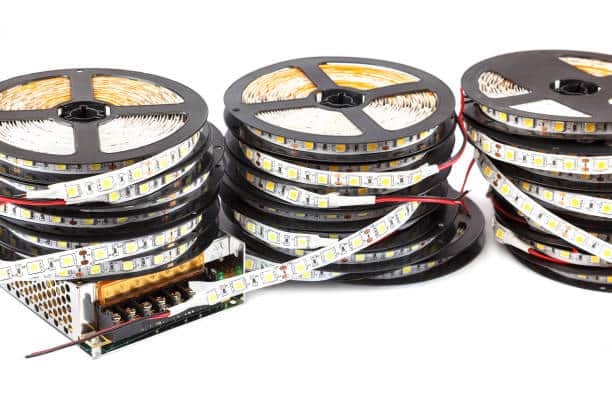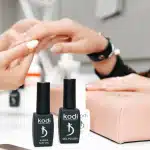If you’ve ever taken on a renovation project or tried to transform a space with lighting, you already know how game-changing LED strip lights can be. They’re sleek, energy-efficient, and incredibly versatile—perfect for everything from mood lighting at home to highlighting product displays in commercial spaces.
But when your project is big and you need a large quantity, it’s not just about picking the first pack of LEDs you find online. Nope. You’re entering a whole new ballgame. You need to know how to Buy Bulk LED Strip Lights like a pro.
Whether you’re an interior designer, a contractor, a business owner, or just a hardcore DIYer with a huge vision, this guide is for you. I’ll walk you through the ins and outs—from picking the right type to making sure you don’t waste your money on subpar products.
Why Buy Bulk LED Strip Lights?
Let’s start with the obvious: cost savings. Buying anything in bulk generally gets you a better price per unit, and LED strip lights are no different. But beyond that, bulk orders mean you get consistency—same color temperature, same brightness, and the same product throughout your project. No weird mismatches when you try to finish the job weeks later. Plus, pairing your lighting upgrades with an affordable electric company can further reduce your energy expenses, allowing you to maximize your savings while maintaining high-quality lighting across your projects.
And if you’re a pro? Buying in bulk gives you the advantage of having stock on hand for future projects or clients. It’s efficient, and it makes you look more prepared (because you are).
Step 1: Know Your Lighting Needs
Before you even start shopping, think about where and how you’ll be using your LED strip lights. Ask yourself:
Is this for indoor or outdoor use?
Do you need them to be waterproof?
Is brightness more important, or do you want softer mood lighting?
Do you need color-changing (RGB) strips or just a solid warm/cool white?
Will the lights need to be dimmable?
Answering these questions helps narrow down your options and keeps you from being overwhelmed by the sheer number of choices.
Step 2: Understand the Specs (Don’t Worry, I’ll Translate)
If you’re like me, the first time you saw LED specs, your eyes glazed over. But hang with me here—it’s not as scary as it looks.
1. LED Density (LEDs per meter):
More LEDs per meter generally means a brighter, more seamless light with fewer dark spots. A strip with 60 LEDs/meter will look patchier than one with 120 LEDs/meter.
2. Wattage:
This tells you how much power the strip uses per meter. It’s also a good indicator of brightness. Just make sure your power supply can handle the total wattage of all your strips combined.
3. Voltage (12V vs 24V):
12V is more common and easier to find accessories for, but 24V can run longer distances with less voltage drop (aka dimming at the far end).
4. Color Temperature:
Measured in Kelvins. Want a cozy feel? Go for 2700K–3000K. For a bright, modern look, 4000K–6000K is your friend.
5. IP Rating:
This is super important if you’re using them outside or in damp environments. IP65 or higher is considered waterproof.
Step 3: Pick the Right Type of LED Strip
There are different types of LED strips out there, and not all are created equal. Here are the main ones:
Standard Density Strips: Great for accent lighting or low-light areas.
High-Density Strips: Ideal for task lighting or places where brightness is a priority.
RGB or RGBW Strips: These let you change colors (great for entertainment areas or retail spaces).
Smart LED Strips: Controlled by Wi-Fi or Bluetooth, perfect if you want to use your phone or smart home system.
Step 4: Vet Your Supplier
This is a big one. When you buy bulk LED strip lights, you want to make sure you’re buying from a reputable source. Here’s what to check:
Reviews and Testimonials: What are other buyers saying?
Samples: A trustworthy supplier will often offer samples before you commit to a big order.
Warranty: A good warranty means they stand behind their product.
Certifications: Look for UL, CE, or RoHS certifications to ensure safety and quality.
Customer Service: Are they responsive and helpful when you have questions?
Tip: If the price seems too good to be true, it probably is. Cheaper strips often mean lower-quality LEDs that burn out or change color over time.
Step 5: Don’t Forget the Accessories
You’ve got your lights picked out—but they won’t do much without the right accessories. Here’s what you might need:
Power Supply (Driver): Make sure it matches the voltage and wattage of your LED strips.
Controllers: For RGB or smart strips.
Connectors: For extending or cutting and re-joining strips.
Aluminum Channels: These help with heat dissipation and make the installation look more professional.
Dimmers: Optional, but great for ambiance control.
Step 6: Plan Your Installation
Even if you’re not doing the install yourself, having a solid plan will help things go way smoother. Map out:
Total length needed
Locations of power supplies and controllers
Whether you’ll need to cut or connect sections
How you’ll mount the strips (adhesive backing, clips, or channels?)
Pro tip: Buy a little extra. It’s better to have too much than not enough when you’re halfway through the job.
FAQs About Buying Bulk LED Strip Lights
Q: How many LED strips can I run on one power supply?
A: That depends on the wattage of your strips and the capacity of your power supply. Add up the total watts needed and make sure the power supply can handle 20% more than that (for safety).
Q: Can I mix different brands or types of LED strips?
A: It’s not recommended. Different brands may have slightly different color temperatures or brightness levels. Stick with one brand for consistency.
Q: Are all LED strips dimmable?
A: Not always. Check the product description. And even if they are, you’ll need a compatible dimmer.
Q: Is it cheaper to buy directly from manufacturers?
A: Often, yes—especially if you’re buying in large quantities. But make sure the manufacturer is reputable and offers support.
Q: How long do LED strip lights last?
A: Quality LED strips can last anywhere from 25,000 to 50,000 hours, depending on use and installation conditions.
Conclusion
Choosing to buy bulk LED strip lights is a smart move for anyone tackling a larger lighting project. It saves you money, ensures consistency, and sets you up for success from start to finish. But like anything else worth doing, it takes a little research and planning.Know your space. Understand the specs. Work with a trusted supplier. And always, always double-check your accessories before installation day. Follow these tips and you’ll not only get the results you want—you’ll look like a total lighting pro doing it.Now go forth and light up the world, one LED strip at a time

Markmalte is an experienced writer for The Celebrity Niche, specializing in celebrity stories. With a keen eye for detail, he brings the latest updates on celebrity relationships, biographies, and news to his readers.







